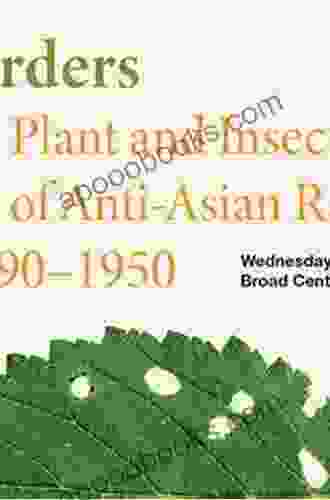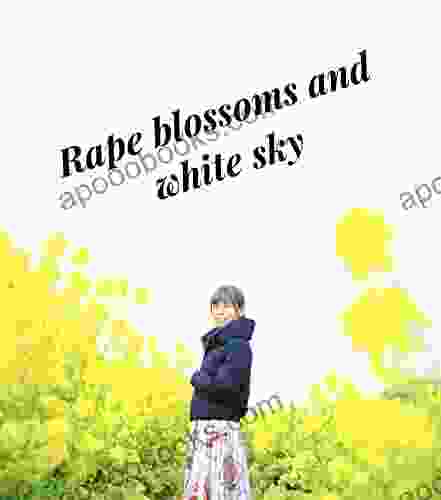Unveiling the Hidden Connections

4.6 out of 5
| Language | : | English |
| File size | : | 2208 KB |
| Text-to-Speech | : | Enabled |
| Screen Reader | : | Supported |
| Enhanced typesetting | : | Enabled |
| Word Wise | : | Enabled |
| Print length | : | 312 pages |
| Lending | : | Enabled |
In her groundbreaking book, 'Transpacific Plant and Insect Migration and the Rise of Anti-Asian Racism in the United States,' Dr. Naoko Akai uncovers a compelling narrative that explores the profound impact of transpacific biological exchange on societal attitudes and the development of racist ideologies. This meticulously researched work unveils the hidden connections between the of nonnative species and the rise of anti-Asian prejudice, illuminating a complex and often overlooked aspect of American history.
Tracing the Roots of Prejudice
Dr. Akai's narrative takes us back to the mid-19th century, a time when the United States was experiencing a surge in immigration from Asia. As people from China, Japan, and other Asian countries sought new lives in America, they brought with them a wealth of cultural traditions, including the cultivation of plants and insects. These nonnative species, introduced intentionally or unintentionally, would profoundly shape both the physical and social landscape of the United States.
As these plants and insects established themselves in American ecosystems, they became entangled in a web of social and economic tensions. Fears about the potential negative effects of nonnative species on native flora and fauna, coupled with the growing anti-Asian sentiment of the time, created a fertile ground for the development of racist ideologies.
Environmental Racism and Social Exclusion
Dr. Akai meticulously examines the ways in which anti-Asian racism manifested itself in the realm of environmentalism. She reveals how concerns about nonnative species were often used as a thinly veiled pretext to justify the exclusion and discrimination of Asian immigrants.
In the late 19th century, for example, the California State Board of Horticulture launched a campaign against the importation of Chinese citrus trees, citing concerns about the spread of pests and diseases. This campaign, fueled by anti-Chinese sentiment, ultimately led to the exclusion of Chinese farmers from the citrus industry.
Similar patterns played out in other areas of the country. Asian immigrants were blamed for introducing pests that damaged crops and spread diseases, reinforcing negative stereotypes and fostering a climate of fear and hostility.
Challenging the Narrative
Dr. Akai's work not only sheds light on the historical roots of anti-Asian racism but also challenges the simplistic narratives that often dominate our understanding of this issue. She demonstrates that anti-Asian prejudice was not merely a product of economic competition or cultural differences but was deeply intertwined with the complex interplay between migration, environmental change, and the construction of racial identities.
By unraveling these connections, 'Transpacific Plant and Insect Migration and the Rise of Anti-Asian Racism in the United States' offers a nuanced understanding of one of the darkest chapters in American history. It invites us to confront the uncomfortable truths of the past and to recognize the ongoing legacy of environmental racism and social exclusion.
A Call for Social Justice
In the concluding chapter, Dr. Akai draws parallels between the anti-Asian racism of the past and the xenophobic sentiments that continue to plague our society today. She argues that understanding the historical roots of prejudice is crucial for combating its modern manifestations.
Through her thought-provoking analysis, Dr. Akai calls for a renewed commitment to social justice and anti-racism. She urges us to reject the harmful narratives that divide us and to embrace a more inclusive and equitable society where all people, regardless of their origin or background, can feel a sense of belonging and dignity.
'Transpacific Plant and Insect Migration and the Rise of Anti-Asian Racism in the United States' is an essential read for anyone seeking a deeper understanding of the complex relationship between migration, environmental change, and the development of racism. Dr. Naoko Akai's insightful narrative challenges conventional wisdom, unveils hidden connections, and serves as a compelling call to action for a more just and equitable society. This book is a valuable addition to the growing body of scholarship on Asian American history and race relations in the United States, and it will undoubtedly inspire further research and dialogue on this important topic.
To learn more about Dr. Naoko Akai and her work, visit her website at https://www.naokoakai.com.


























































































